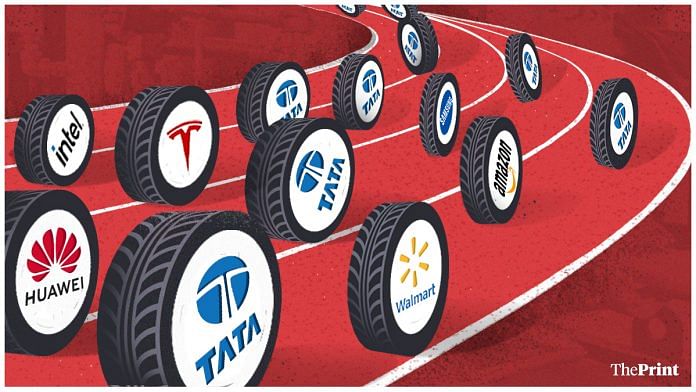The Tata group is on a roll. Tata Motors has doubled its share of the car market over the past year and Tata Steel is enjoying a price boom, while Tata Consultancy Services and Titan continue to chug along. The group is still heavily in debt, but the burden is shrinking. Investors are enthused; the group’s market capitalisation has soared over the past year and more. From accounting for about 90 per cent of the group’s market value, TCS’s share is down to two-thirds — which tells us that the software services company is no longer the group’s sole bread-winner. All this is a strong vote in favour of the group’s top management.
But one wonders about the sweeping range of its recent initiatives, covering four or five broad areas, each with multiple individual businesses. Its foray into defence and aerospace involves making cargo planes, wings for fighter aircraft and fuselages for helicopters; armoured and defence-purposed vehicles of various kinds; artillery guns; drones; advanced materials; and sundry weapon systems — all of them involving multiple marriages with leading manufacturers. Meanwhile, its “super-app” digital foray aims to service a range of consumer-facing businesses, including retailing, travel and financial services (this last an area of past failure). Acquisitions have helped do a jump-start.
Third, it has got into electronics hardware manufacture with a handset component and assembly plant, investment in a network equipment company, and the latest announcement of an entry into chip manufacture. The group also intends to take leadership in electric vehicles. And, of course, it would like to acquire Air India even though that would create a mishmash aviation portfolio (adding to Vistara and Air Asia India).
Taken together, this range of initiatives means that the group is planting its flag simultaneously on patches of turf dominated by different global giants: Intel, Samsung, Tesla, Huawei, Amazon, Walmart and others — all of which happen to be more focused enterprises than Tata. One wonders whether any one group can have the mental bandwidth, financial muscle and research budgets required to stay abreast of them all.
Also Read: Indian economy needs to fire on 4 engines to grow. But Modi govt is betting on just 2
An old-style conglomerate
The contradiction is obvious: The group talks focus but still acts like an old-style conglomerate. It is possible that the plan is to position itself as a leading player in tech-intensive engineering. Its exit from commodity plays like fertiliser and cement could be viewed as part of this plan, but retaining steel does not. Besides, there is risk piled on risk in capital-intensive businesses that are also marked by rapid obsolescence, and which require scale if one is to avoid thin margins.
The group’s history provides some lessons. Its latter-day successes have been in a consumer-oriented entity like Titan and the design shop Tata Elxsi; the latter’s share price has quadrupled in a year. Earlier ventures had focused on adding value to locally-available resources: iron ore, coal and limestone for steel-making, cotton for textile mills, and water for generating hydro-electricity. However, the last ambitious round of deal-making did not produce great results. The steel company in Europe, two luxury car companies in Britain, top-end hotels overseas and coal mines in Indonesia, among other purchases, have all caused varying degrees of grief, while telecom was a comprehensive botch-up. In aviation, the group is still only a minor player, as is its domestic car business. Focused players like IndiGo and Maruti sit astride these markets.
Against this backdrop, what is the logic that works today? Defence has the advantage of guaranteed purchases from overseas partners, or from the government. The home market advantage also works when there is global scale, as with handsets, though that field is getting crowded. Some, not all, of the remaining ventures could need crutches — the government is handing out large dollops of cash as well as tariff protection, but for how long? Chip manufacture, for instance, might make sense only as a specialised niche-market play. The point is that every business that looks like an opportunity or is being promoted by the government is not necessarily one that you need to get into. For long-term advantage, there has to be business fit.
By special arrangement with Business Standard
Disclosure: Ratan Tata is among the distinguished founder-investors of ThePrint. Please click here for details on investors.
Also Read: Stock market as a mirror — how Indian biz has changed in 40 years, and what it’s missing



